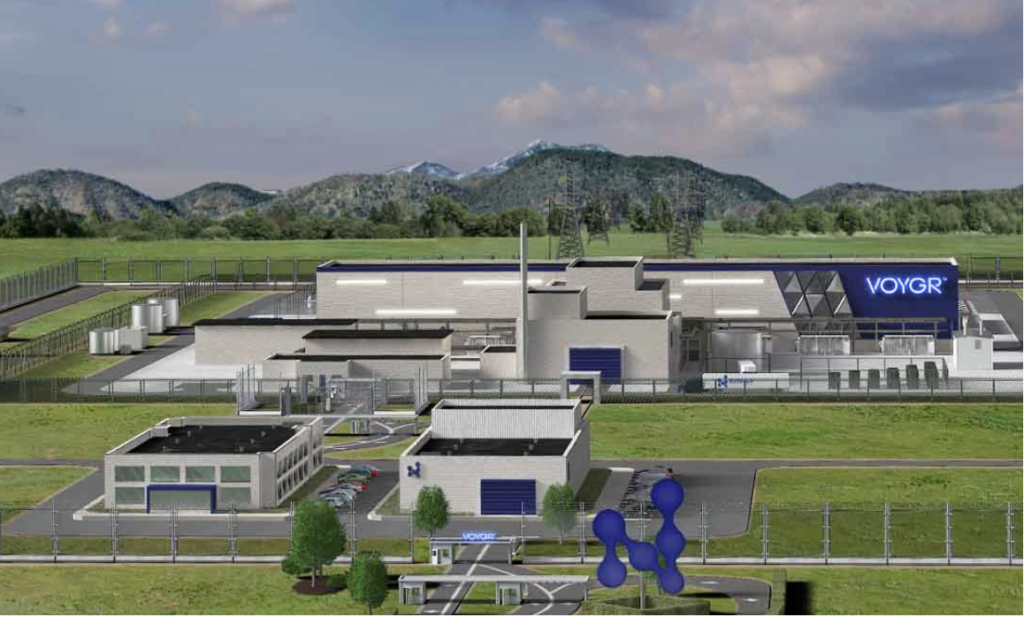
by James C. Sherlock
Where is Virginia going with nuclear power, the non-carbon energy source that works 24/7/365 to maintain grid stability for all those sources that do not?
Where we are. Virginia has four nuclear reactors producing electric power — two at Surry station in Surrey County (produces 14% of Virginia’s electricity) and two at North Anna in Louisa County (17% of Virginia’s electricity).
Surry has two Westinghouse pressurized water reactors that went on-line in 1972 and 1973 respectively. Surry’s licenses from the NRC have been renewed to 2052 and 2053 respectively. North Anna has two similar Westinghouse reactors which went on-line in 1978 and 1980, respectively. Dominion expects those licenses to be extended until 2058 and 2060.
In 2017, Dominion was issued a permit by the NRC to build a third, much more powerful and newer technology reactor at North Anna. The permit is good until 2037. It is not in Dominion’s current plans.
Under the Virginia Clean Economy Act (VCEA), Virginia is legally required to retire all baseload generation, except for incumbent nuclear power plants, in favor of renewable generation by 2050.
In 2022, Governor Youngkin released an all-of-the-above energy plan which announced that Virginia would build a Small Modular Reactor (SMR) in southwest Virginia.
The goal is to have the SMR in operation by 2032.
For an explanation of SMR, see Dominion’s short essay starting on page 9 of its Integrated Resource Plan. Dominion has included SMRs as an available resource in all of its plan options beginning in 2032.
That initiative is welcome, but is fuzzy with regard to actual deployment plans, which are not yet formulated.
And fuzzy with regards to compliance with the VCEA, at least to me. If they are not compliant, then the law should be changed to accommodate them.
Background. According to the Biden Department of Energy, it would take over three million photovoltaic panels or 431 utility-scale wind turbines to replace the electrical output of one of Dominion’s nuclear reactors.
Scientist James Hansen and activist Michael Shellenberger led the rethinking of nuclear with a presentation at COP 23 in Bonn in 2017.
In California and overseas, greens are actively pushing for the nuclear option.
Gavin Newsome of all people is looking to extend the life of the Diablo Canyon plant that was scheduled to be shut down. Something about the vulnerability of California’s grid from renewables.
Rolling power outages have changed his mind. That and new funding for Diablo Canyon from the federal Department of Energy Civil Nuclear Credit Program in the second quarter of FY23.
Japan, a dozen years after Fukushima, is restarting idled nuclear plants and considering constructing new ones.
Germany is considering re-starting three nuclear plants it shut down prematurely in the face of the shutdown of Nordstream I and II.
Anti-nuclear greens acknowledge that existing renewable energy and storage technologies are insufficient to achieve a carbon-free grid. But their “plans” depend on future breakthroughs and extremely optimistic trajectories to make that grid both real and reliable.
Nuclear energy requires no such faith.
Clean Virginia. SMR technology, developed to commercial scale by NuScale Power Reactors and whose benefits are celebrated by the federal Department of Energy, is about to be fielded in Idaho.
Michael Bill’s Clean Virginia, by virtue of its massive campaign contributions and public advertising, controls the clean energy policy of the Democratic party in Virginia.
I have both supported and disagreed with Clean Virginia.
I applaud its attacks on Dominion’s monopoly and its support for campaign finance reform. I disagree with its positions on gas pipelines and offshore wind.
I tried to find Clean Virginia’s policy on nuclear energy in general and Small Nuclear Reactors specifically on its website. I read 20 pages of press releases and all of the rest of the information there.
Not a hint.
So I asked Laura Gonzalez, Clean Virginia’s Energy Policy Manager that direct question in an email sent April 25th. I have not seen a response.
I find odd the unwillingness of Clean Virginia to express support — or even hopes for — a clean energy source that promises to be far more reliable for support of base loads and less stress on the grid than wind or solar, has design approval from the NRC, and can quickly be fielded.
The only reason I can think of is that perhaps Clean Virginia’s own green supporters are split on the issue and Mr. Bills does not want to take a position.
He has certainly not been reticent about anything else.

Leave a Reply
You must be logged in to post a comment.